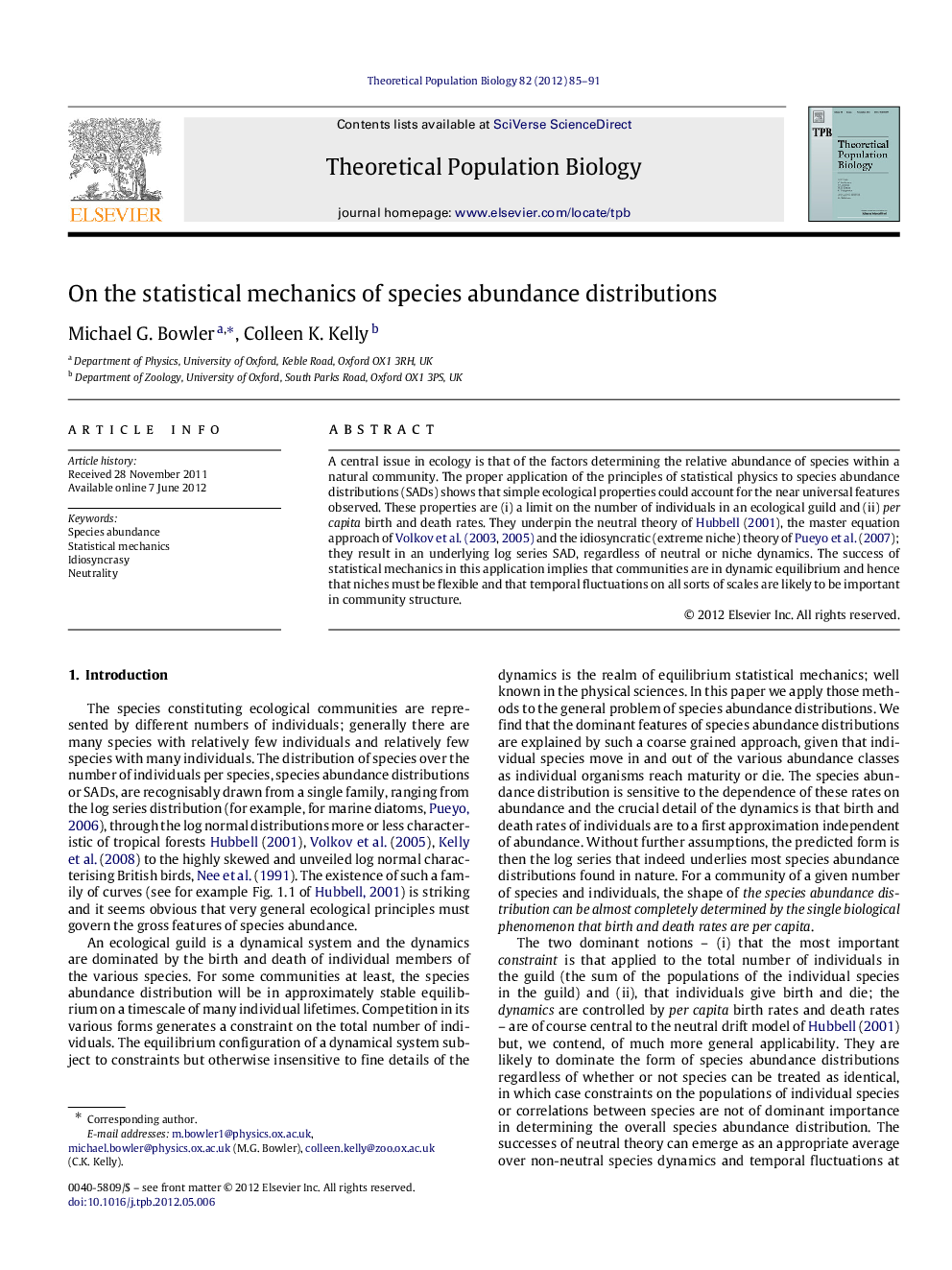| کد مقاله | کد نشریه | سال انتشار | مقاله انگلیسی | نسخه تمام متن |
|---|---|---|---|---|
| 4502522 | 1320574 | 2012 | 7 صفحه PDF | دانلود رایگان |

A central issue in ecology is that of the factors determining the relative abundance of species within a natural community. The proper application of the principles of statistical physics to species abundance distributions (SADs) shows that simple ecological properties could account for the near universal features observed. These properties are (i) a limit on the number of individuals in an ecological guild and (ii) per capita birth and death rates. They underpin the neutral theory of Hubbell (2001), the master equation approach of Volkov et al., 2003 and Volkov et al., 2005 and the idiosyncratic (extreme niche) theory of Pueyo et al. (2007); they result in an underlying log series SAD, regardless of neutral or niche dynamics. The success of statistical mechanics in this application implies that communities are in dynamic equilibrium and hence that niches must be flexible and that temporal fluctuations on all sorts of scales are likely to be important in community structure.
Journal: Theoretical Population Biology - Volume 82, Issue 2, September 2012, Pages 85–91